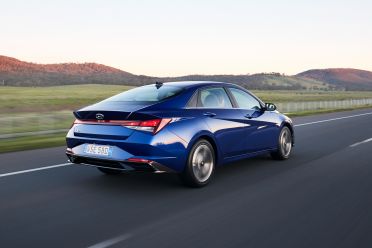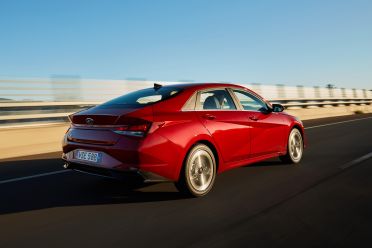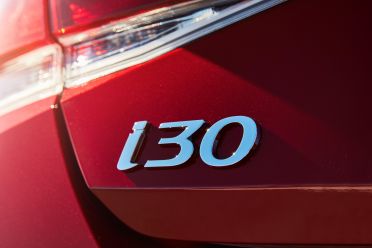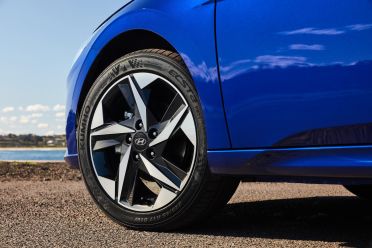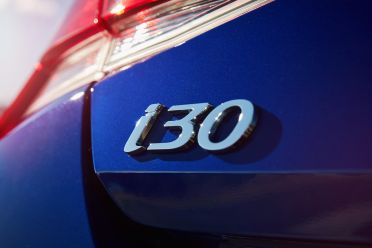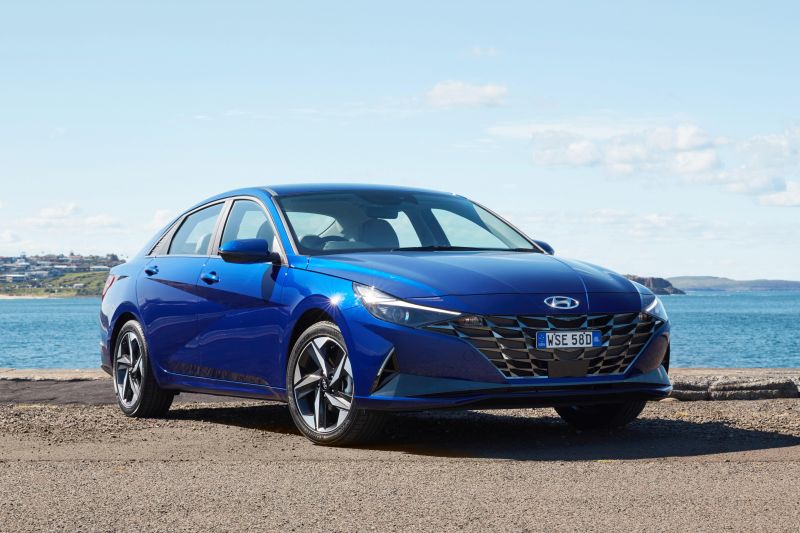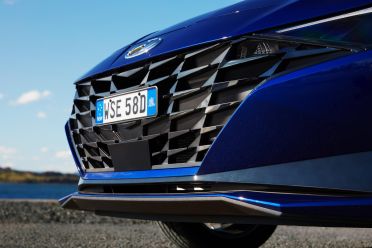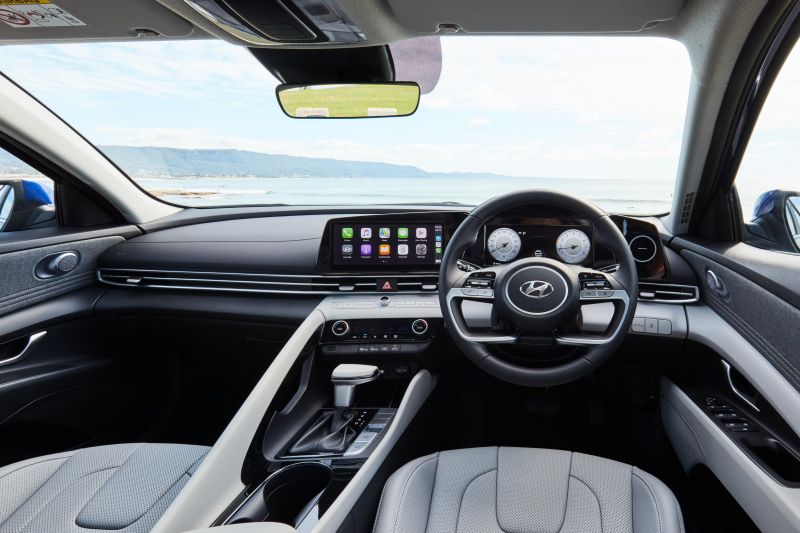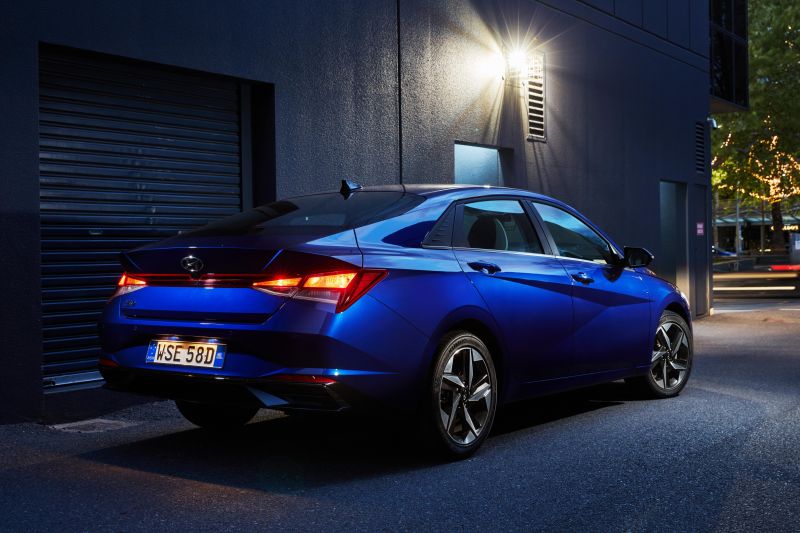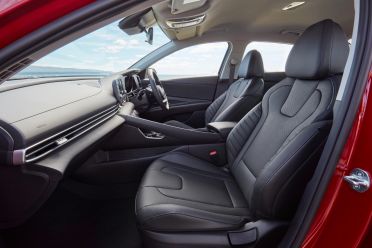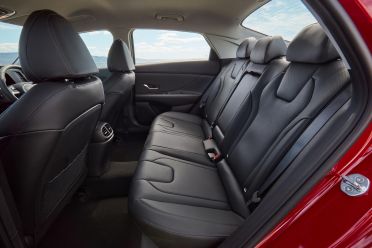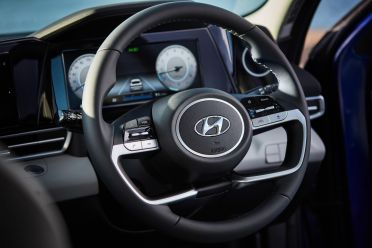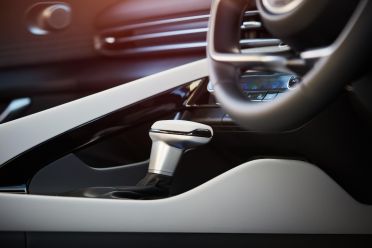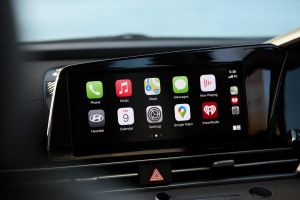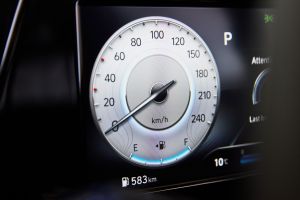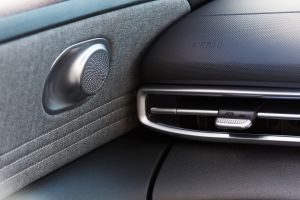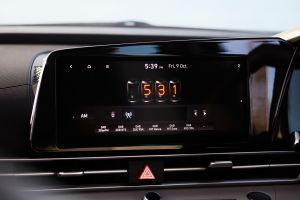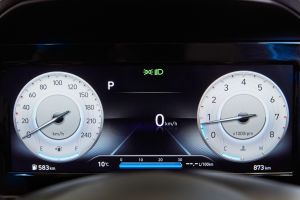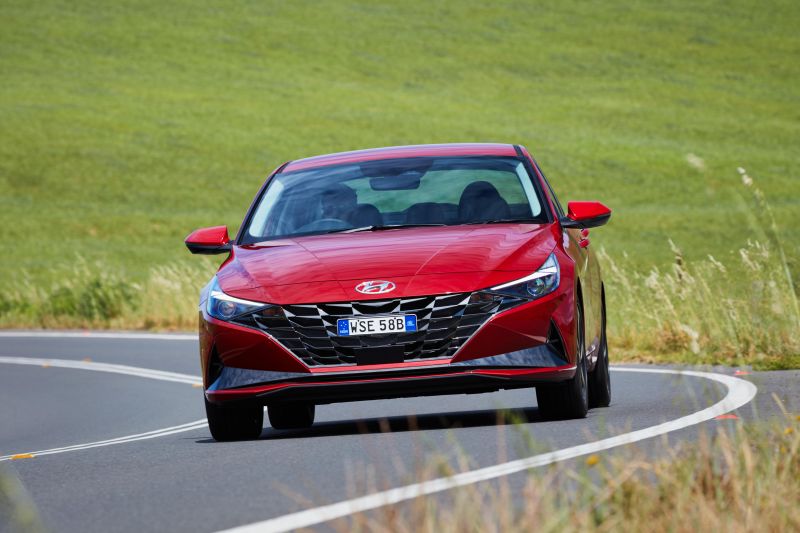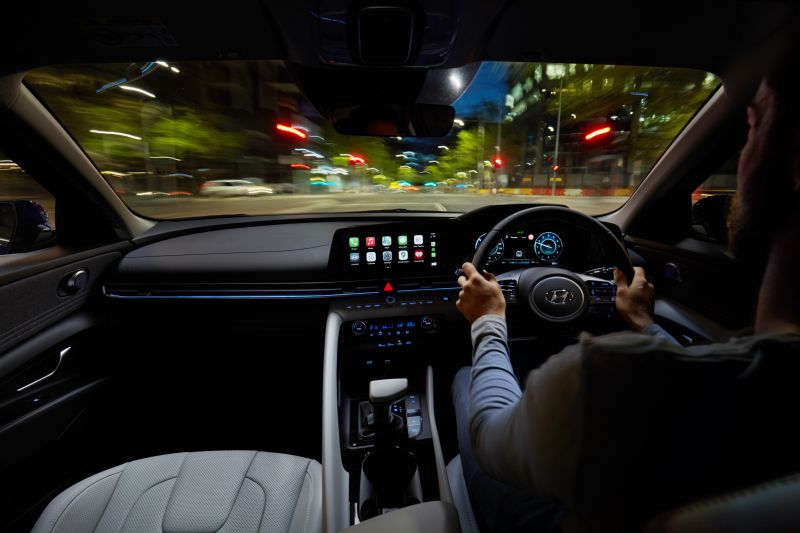Popularity is one thing, sheer depth of all-round goodness is quite another. And Hyundai hopes to steal thunder from rival Toyota’s Corolla by introducing an i30 not merely all-new but with very little resemblance – aesthetically and technically – to its popular i30 hatchback, not necessarily to set sales records alight but to demonstrate what’s it’s capable of in reasonably priced motoring.
Hyundai Australia wanted the i30 Sedan badly enough that ours, as the only right-hand-drive version globally, was effectively made for Oz and not without considerable effort and investment.
It’s not sold in Europe and the donor model was primarily intended for the US where it’s badged Elantra. Unsurprisingly, the newcomer’s contemporary Euro-infused vibe, angular design and strong tech pitch more keenly targets younger buyers than the outgoing Elantra.
Of course, locally, the i30 Sedan effective replaces the retiring Elantra nameplate and Hyundai believes the sheer goodness, style and value of the thing has a keener multi-generational appeal to local tastes, which remains to be seen.
You don’t have to squint to see that the i30 Sedan isn’t the hatchback with a bigger bum. The aggressive front fascia, impossibly angular bodylines and scooped tail pull an altogether larger prospect than either the five-door i30 or outgoing Elantra, framed in profile with a roofline sloping from the B-pillar in an uninterrupted arc to the trailing end of the boot lid.
It is, by design convention and this author’s opinion, technically a four-door coupe. Calling it Sedan could well be a slightly missed trick…
It’s not i30 Hatch underneath, either, instead boasting a newer third-generation K3 platform and a revised ‘SmartStream’ version of the naturally-aspirated 2.0-litre petrol four in the two mainline variants that launch the range locally, the base Active (red) and high-spec Elite (blue).
A sporty turbo 1.6-powered N Line follows closely in the local tyre tracks before the end of the year – indeed, Hyundai Australia had examples on static display at the i30 Sedan local launch where we sampled both 2.0-litre versions. And there’s the inevitable ‘N’ hottie iteration in the logical pipeline, of course.
We discovered the arrestingly reimagined cabin design, the fulsome safety tech, the keenly sharpened Aussie ride and handling experience and well-stacked value pitch all conspire to what’s a compelling not-so-small, not-necessarily-sedan-like proposition that hits wide-ranging goals, whether it happens to strike a light under buyers youthful or young at heart, or not.
How much does the Hyundai i30 Sedan cost?
Pricing starts at $24,790 before on-road costs for the base Active manual with a $2000 premium for the automatic. The Elite, available in automatic only, is $30,790 before on-roads. The public website advertises the Active from $28,339 drive-away and the Elite from $34,519 drive-away.
Like for like, the i30 Sedan Active auto is just $290 more than the outgoing Elantra Active 2.0 auto it effectively replaces, while the Elite version splits the previous-generation Elantra Sport ($29,530 list) and Sport Premium ($32,060 list) though each has 1.6-litre turbo power.
At the time of writing, the Elantra Active auto was on offer at $26,490 drive-away.
As outlined in our pricing and spec story, the i30 Sedan is between $130 less to $1070 more than the revised i30 Hatch depending on variant (including N-Line versions).
Segment rivals? The i30 Sedan Active auto’s $26,790 plays against Honda Civic VTi-S ($25,490 list), Kia Cerato S auto with Safety Pack ($25,290 list), Mazda 3 G20 Pure auto ($26,590 list), Subaru Impreza 2.0i-L Sedan auto ($25,860 list) and Toyota Corolla Ascent Sport Hybrid ($27,395 list) in sedan guises, offers notwithstanding.
Meanwhile, the flagship Elite’s $30,790 price pits it against mid-range Civic VTi-L ($28,690 list), Cerato Sport+ ($29,340 list), mid-grade Mazda 3 G25 Evolve ($30,090 list), top-dog Impreza 2.0i-S ($31,160 list) and the penultimate Corolla SX Hybrid ($30,795 list).
All in all, the i30 Sedan appears priced well rather than super sharply, before you consider what equipment and safety kit it bundles into the two-variant range. Also, metallic paintwork for i30 Sedan comes at a $495 added cost.
How much should I pay?
At the end of the day, the price you pay at the dealership will be dependent on a number of factors such as when you want to buy (is the dealership chasing sales?), the age of the model you’re purchasing (is a new generation model being launched soon) and of course your strength as a negotiator.
What do you get?
The Active fits dusk-sensing halogen headlights with LED driving lights, 17-inch alloy wheels, leather-appointed interior trim, single-zone air-con with rear vents, adaptive cruise with stop and go, an electronic park brake on automatic versions, a reversing camera, rear parking sensors, Qi inductive phone charging, and a full-sized spare wheel.
This base version also features an 8.0-inch touchscreen with Apple CarPlay and Android Auto, if no sat-nav. Instrumentation here is analogue with a 4.2-inch digital driver’s screen with digital speedo.
The step-up to Elite grades adds power-folding mirrors, rain-sensing wipers, keyless entry and go, remote start-up, as well as a powered bootlid with gesture control on the outside.
Meanwhile, the cabin has the same leather-appointed trim but gains a two-tone colour scheme, the fancy dual-10.25-inch displays incorporating infotainment and the instrument cluster, ambient LED lighting, dual-zone climate control, native sat-nav, DAB+ and Bose-branded premium audio.
There are some key differences in the amount of active safety gear fitted between the two mainline variants – more below – though it’s disappointing that you need to stump up for the N Line versions to get LED headlights and tail lights.
Nor does the Elite have front parking sensors. That said, partial leather trim in the base model and dual-10.25-inch displays in the high-spec versions are excellent inclusions at their respective price points.
Is the Hyundai i30 Sedan safe?
The i30 Sedan is currently unrated by ANCAP. And short of being audited by the independent Australasian authority ANCAP for assessment, it may well not be moving forward.
As it’s underpinned by a newer platform than i30 Hatch, it doesn’t carry over that range’s full five-star ANCAP rating from 2017 that was, coincidentally, tested using the Elantra Sedan with the hatch-common platform.
As the all-new i30 (Elantra) isn’t due for sale in Europe, there’s no Euro NCAP assessment with which to draw from, though Hyundai claims this new third-generation K3 platform offers improved crash characteristics to the older five-star rated platform.
The company also says the newcomer is categorically safer given the augmented active safety equipment fitted in range, though the i30 Sedan’s lack of centre airbag fitment – now a stipulation for five-star ANCAP and Euro NCAP assessment – prevents it from scoring the maximum ratings tier.
The model line-up has six airbags with the base version offering radar- and camera-based autonomous emergency braking at up to 180km/h with pedestrian and cyclist detection at some speeds. Nifty, too, is the associated ‘junction’ feature that detects oncoming traffic turning across your bow.
Active lane-keeping (to avoid run off) and lane-following (lane centring self-steering) are on the entry version, as is driver attention warning, adaptive cruise with stop and go, and rear occupant ‘alert’ (which is more of a reminder).
The Elite version adds to the base car’s features with blind-spot monitoring and collision avoidance (via braking), parking collision avoidance, rear-cross traffic avoidance assist – both of which use audible warning and reversing AEB if necessary – and safe exit warning.
What is the Hyundai i30 Sedan like on the inside?
The i30 Sedan literally stretches the perception of a small four-door – it’s 30mm longer than the outgoing Elantra and a whopping 310mm longer than the current i30 Hatch, which is also 70mm shorter in wheelbase.
Add the lower seat positioning afforded by the new K3 platform and improvement in cabin space against Hyundai’s other small stablemates is marked and noticeable.
The outgoing Elantra is no slouch for rear roominess, but the i30 Sedan adds 58mm of rear legroom. The effect is a thoroughly mid-sized ambience with genuine four-adult long-haul comfort. This really is a key benefit when opting for i30 Sedan over the hatchback, which is decent for rear legroom if offering almost 8cm less length to the front seatbacks.
Add that the i30 Sedan brings with it 474 litres of bootspace against the five-door’s 395L and the newcomer is clearly the preference for outright practicality.
The cabin design in either the Active or Elite is much more contemporary and cleaner in styling against the familiar i30 hatch format. It’s both fancy and minimalist at once, robbing conspicuously from some German marques in the dash-wide air vent treatment (Audi) and the dual-10.25-inch digital instrumentation in the top spec version (Mercedes-Benz).
Add the driver-centric wraparound console with passenger console grab-handle for an extra design nod to pricey Euro machinery and it’s a lot of tasty presentation on offer for the money.
On that, material presentation and solidity is good at these price points, though the Active’s cost-consciousness is evident in the sea of grey shiny plastic. Still, as evident in the inspired concentric analogue instrument design with digital speedo flanking the central roundel, penny-pinching doesn’t have to rob a model of interest and a sense of occasion.
The Elite feels worth the added investment in extra cabin fanfare alone. The dual digital screens, identically sized and ‘floating’ like the Mercedes-Benz format if in a distinctive vee rather than flat-panel arrangement, is a real treat. That the default graphic skin mimic’s conventional instrumentation mightn’t be as techy as some upmarket systems, but it’s nice on the eye and easy to read at a quick glance.
The four-spoke wheel design adds a distinctive look, is impressively tactile, and fits nicely in the hand while the low-slung seating, with pleasing middling contour that balance comfort and support, adds a bit of sporty ambience to the front row.
The leather ‘appointment’ is fairly rudimentary and much of the trim feels synthetic, though fabric door inserts in the Elite, neat Bose door speakers and LED strip lighting are among some of the details that otherwise bring more of a Genesis than traditionally Hyundai vibe to the cabin space.
If this lift and modernisation is a strong signal for Hyundai interior design moving forward, the brand is certainly lifting its game and that’s most welcome indeed.
If anything, the more monochromic ‘grey’ plastic wash, the simpler manual air-con controls and questionable plastic ‘ear’ on the right side of instrument binnacle drag the base Active’s presentation down a bit in a way the richer Elite avoids. But that’s a proper nitpick.
It’s countered in areas such as the leather appointed trim, stitching and quality switchgear that, in combined effect, redefine how nice a mid-$20,000 small car’s accommodation can be.
Bar an absence of device power in row two of either variant – though each gets rear air vents – there’s not much to grumble about in the cabin.
What’s under the bonnet?
Hyundai has mildly massaged the entry naturally-aspirated 2.0-litre four in this new SmartStream iteration, producing 117kW at 6200rpm and 191Nm at the 4500rpm mark. That’s a down a little on previous communication and subsequent reports of 120kW and 203Nm.
The engine is backed by a choice of six-speed manual or six-speed conventional automatic transmissions. American models, for reference, employ Hyundai’s take on the CVT – dubbed ‘IVT’.
The combined consumption claim for the automatic version is 7.0L/100km – we’ll have to wait for the i30 Sedan to roll through the CarExpert garage before assessing how closely real-world thirst sits against what’s advertised.
How does the Hyundai i30 Sedan drive?
The word that comes to mind for either variant’s driving character is ‘resolved’.
Neither trades on excitement or sportiness, but that’s not the main game here. Instead, you get a well-rounded, quality experience that’s comfy and relaxing for passengers and genuinely satisfying from behind the wheel.
Hyundai Australia prides itself on its proprietary localised suspension tunes and the i30 Sedan’s tune really shines. It fits a torsion beam rear end – you need the N Line to get multi-link – but there’s nothing about the deftly-balanced ride and handling that suggests as much.
Compliance and wheel control is superb, with a real dignity and upmarket polish to how it rides, isolates noise, and controls body movement. There are a good number of pricey premium Euro sedans that don’t ride this nicely.
The i30 is crisper at its controls and lighter in responses than you initially expect. Tyre grip can get tasked if you push on a bit and our test saw quite a bit of rain in all the riskiest places, but the dynamic poise and driver cooperation inspires confidence in what’s a well-balanced and lithe handling machine whichever variant you choose.
Hyundai chose some fairly narrow and well-marked roads for its launch program and it’s hard to tell how well the lane departure assistance works because the actual, seemingly complimentary lane-tracing tech keeps the car assertively centred between the solid white lines.
It verges on being too aggressive though it can quickly be switched off at a touch of a shortcut button, without any silly diving through touchscreen sub-menus. Nice.
It’s certainly no rocket, and the roll-on punch from the engine is modest enough that highway overtaking takes a bit of forethought and patience. But the naturally-aspirated engine makes up for it in clean, immediate response and progressive delivery that’s ideal for around town commuting, backed by a smooth-shifting and intuitive auto.
The powertrain does feel more resolved and polished than the outgoing stuff, though it’s a bit of a shame that the high-spec Elite can’t be had in a small-capacity turbo form. We’ll have to wait to sample that powertrain in the forthcoming N Line version.
Ride and handling
Hyundai has erred on the side of comfort with the i30 Sedan, which is perfectly in keeping with what its target buyer needs
It’s no surprise, then, the mainline versions really offer no sporty pretension outside of some impressively adept dynamic qualities.
No foul though. If anything, the supremely quiet and almost serene running fits the bill perfectly for this type of small sedan and either version punches above (fiscal) weight for upmarket on-road feel.
How much does the Hyundai i30 Sedan cost to run?
Warranty is a descent five years and unlimited kilometres of running.
Servicing is capped at $259 for four of the first five 12-month/15,000km servicing intervals, with the fourth (48 month/60,000km) instalment asking for $359.
Sticking with Hyundai for servicing brings with benefits such as ten years of roadside assist and map updates.
CarExpert’s take on the Hyundai i30 Sedan
Small sedans are far from being the kings of motoring cool these days. But the mainline i30 Sedans seem hell-bent on altering that perception, with affordable pricing and little in the way of sporting pretension as sauce.
Their cabin treatments are inspired, its spacious practicality is un-compromised, the techy frills and upmarket design cues are pleasingly convincing, and it’s backed up by some serious safety firepower (ANCAP ratings notwithstanding). They’re priced nicely, cheap to run, and drive better than affordable sedans usually do.
All-round goodness and depth in quality then, wrapped in exterior styling that mightn’t be to all tastes but certainly beings with it a sense of occasion. It feels like it builds on i30 providence nicely and lights a few fires in places that were a mild glow in the outgoing Elantra.



